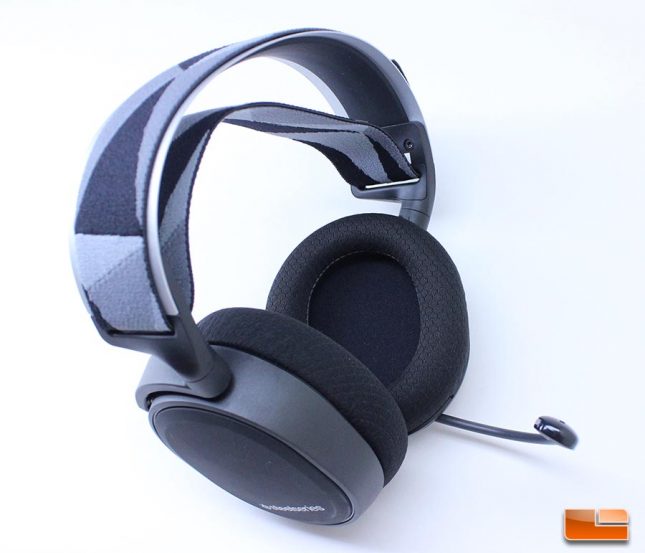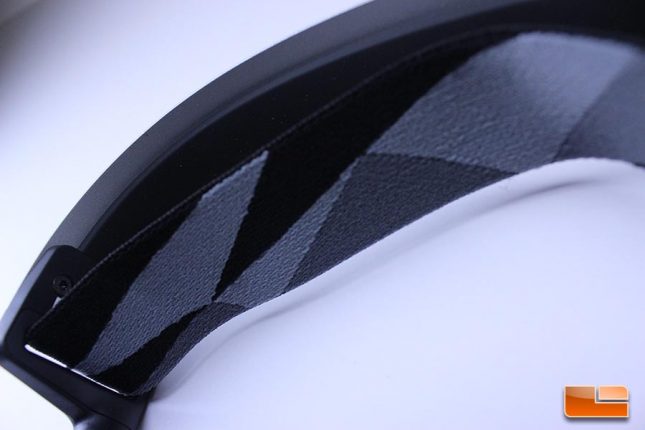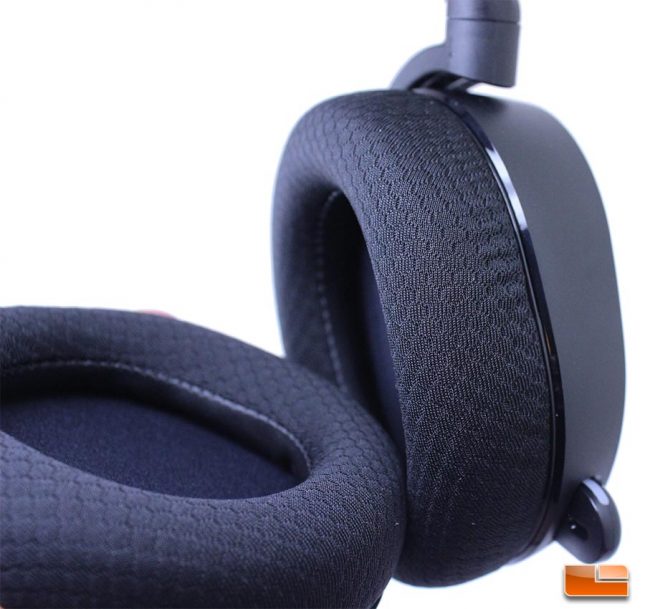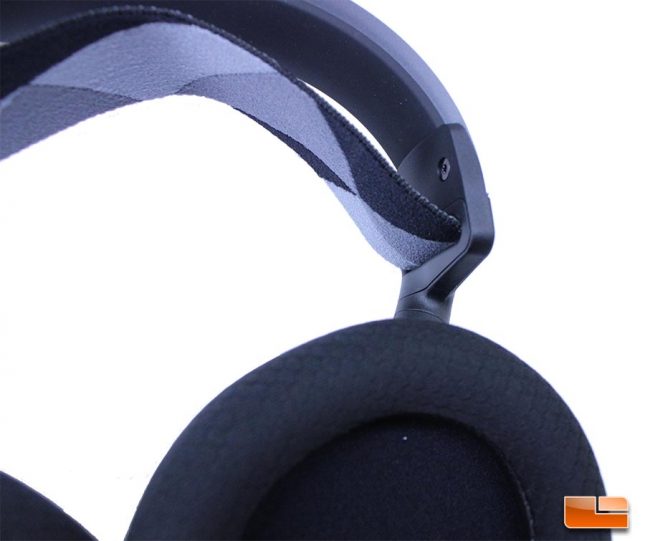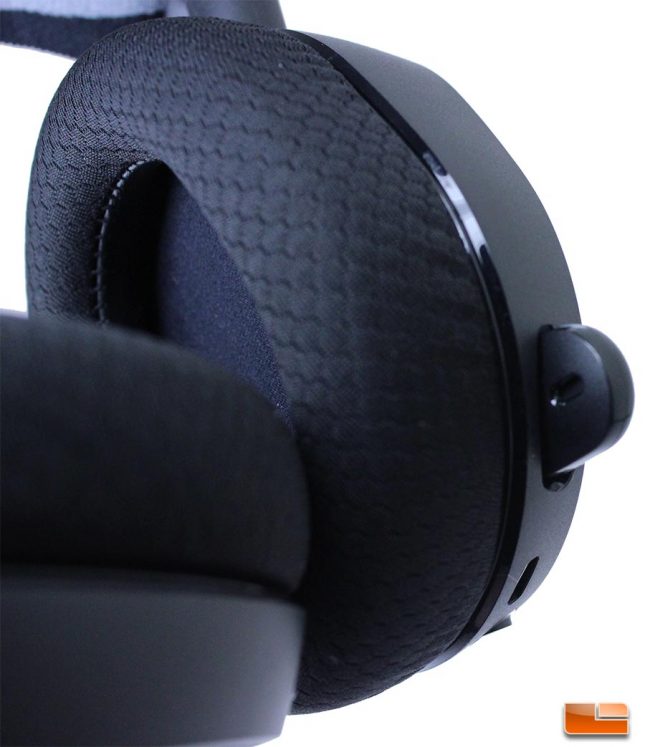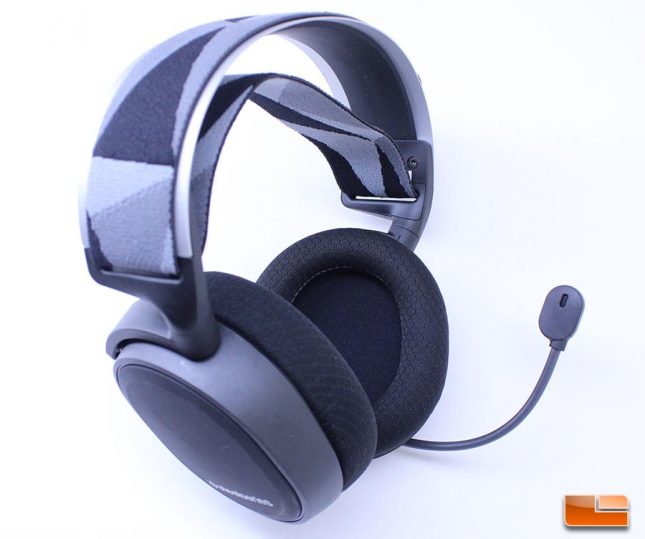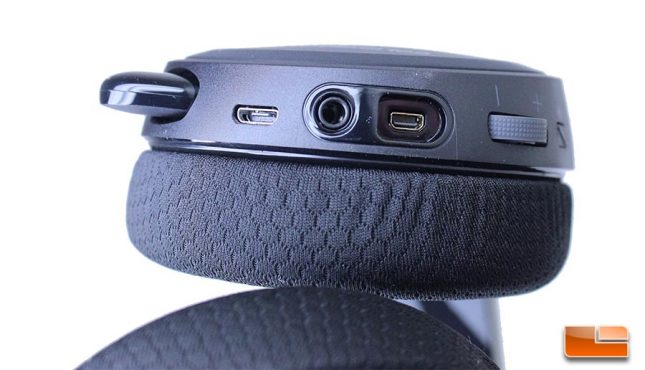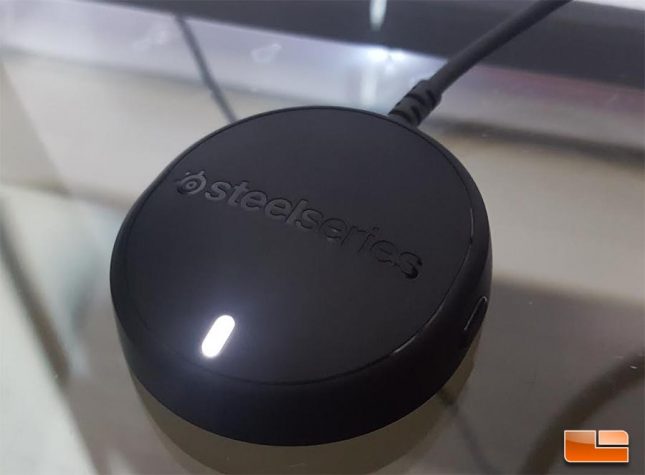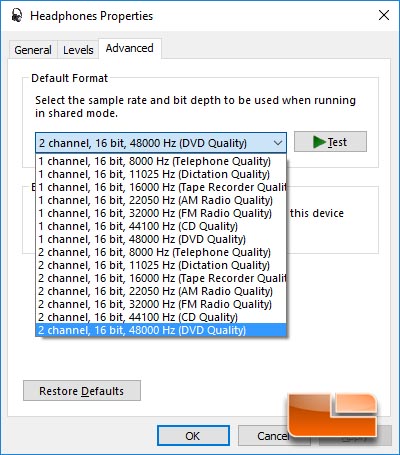SteelSeries Arctis 7 Wireless Gaming Headset Review
SteelSeries Arctis 7 Wireless Gaming Headset Review – A Closer Look
The Arctis 7 features a lightweight alloy headband that is lightweight and flexible, but very sturdy at the same time. The headband is wrapped by SteelSeries’ ski-goggles headband, which is adjustable by a Velcro slider. This headband allows for a great deal of adjustment and we were able to find our optimal comfort level without issue after using the headset for a short amount of time. The alloy headband can be gently bent outwards should the initial clamping force be too much for your liking, as well.
The ski-goggles headband included with the Arctis 7 are a stylized black and white design that can be swapped out for a new unit. SteelSeries took an “artist appreciation” approach with the Arctis series, with custom ski-goggles headbands designed by various artists available.
The AirWeave earpads are soft, lightweight and have a nice, smooth feel to them. They offer a great balance of allowing breathability and keeping sound sealed in, so they are doing their job as ear pads. These earpads can be replaced with ones made of different material, or with similar pads, should they wear out over time. New pads are available from SteelSeries and I suspect other aftermarket pads, such as those from BrainWavz, can be modified to work with the Arctis 7.
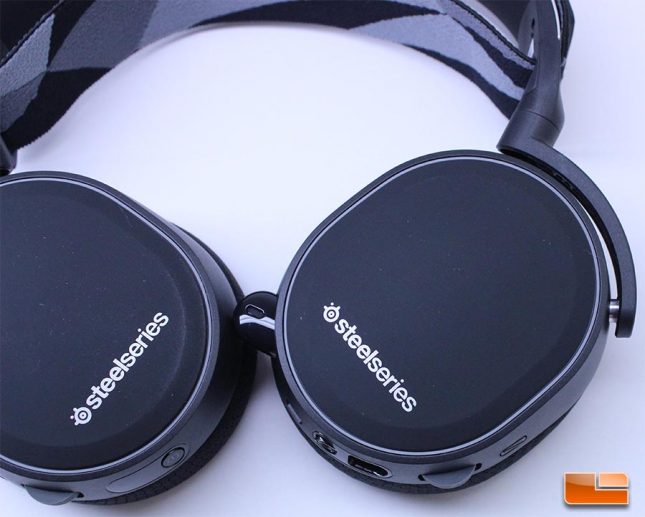
The earcups feature a soft-touch rubber and each has the SteelSeries logo printed in a clean white font. These cups are very nicely designed, with a clean aesthetic that leans more towards a typical wireless headphone design than gaming headset.
The swivel design of the earcups allows for side to side adjustment of the cups and they can each be positioned so the the headset can lay flat. These are very high quality swivels and don’t have any squeeking issues or longevity concerns. Unfortunately, due to the swivel design, outward adjustment is left to the headband, so there can be a bit of initial clamping force presented by the Arctis 7.
The ClearCast microphone is able to be tucked into the headset, with a portion sticking out for easy extension.
There is a good amount of adjustment available on the ClearCast microphone and SteelSeries places an LED on the end of the mic for visual cues, such as charging indication, or low battery life warning.
On-ear controls for various functions, such as volume and power, work very well. The ChatMix dial, which is on the non-pictured earcup, isn’t something I was able to test extensively, though I can verify that it does adjust the volume accordingly so you can hear your voice over in-game audio. I did occasionally have a problem where I would accidentally hit the ChatMix slider and the volume output would be affected, but this was a rarity and not a major issue. The 3.5mm jack sits next to the connector for the console/mobile cable and has great placement.
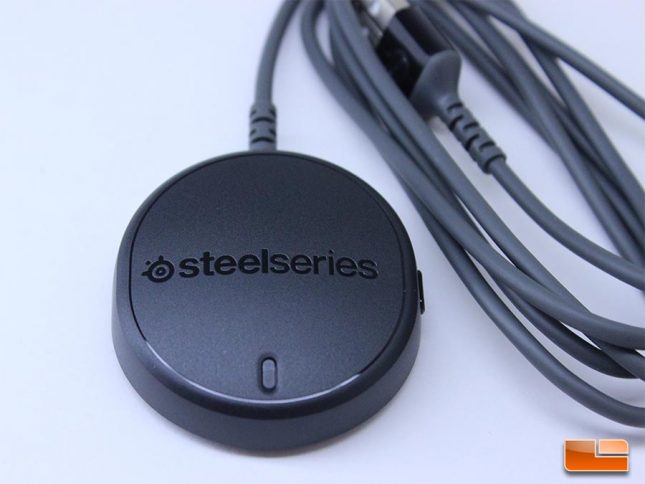
The USB receiver for the Arctis 7 works very well, thought it is a bit large compared to receivers we’ve seen from other manufacturers. The size is excusable, because the receiver also allows for audio-pass thru, so that you can use the Arctis 7 with your desktop speakers and not have to hassle with additional software, or switch between sound cards.
The white LED on the receiver lets you know if the headset is connected, or updating firmware, by either being powered on solidly or blinking. The receiver has a rubber pad on the bottom to help it hold in place. We wonder if a magnetized receiver would have been possible, as this would have allowed for more versatile installation options, such as sticking the receiver on the side of a case?
Audio quality over wireless is pretty solid, but the Arctis 7 are limited to 16-Bit 48000 Hz playback. Many high quality soundcards and even competing headsets are capable of playback at higher bit and sample rates. In real-world scenarios, the 48000 HZ sampling rate limitation is going to be perfectly acceptable and optimal for most users.
Let’s take a look at the SteelSeries Engine 3 software and how it interacts with the Arctis 7.

